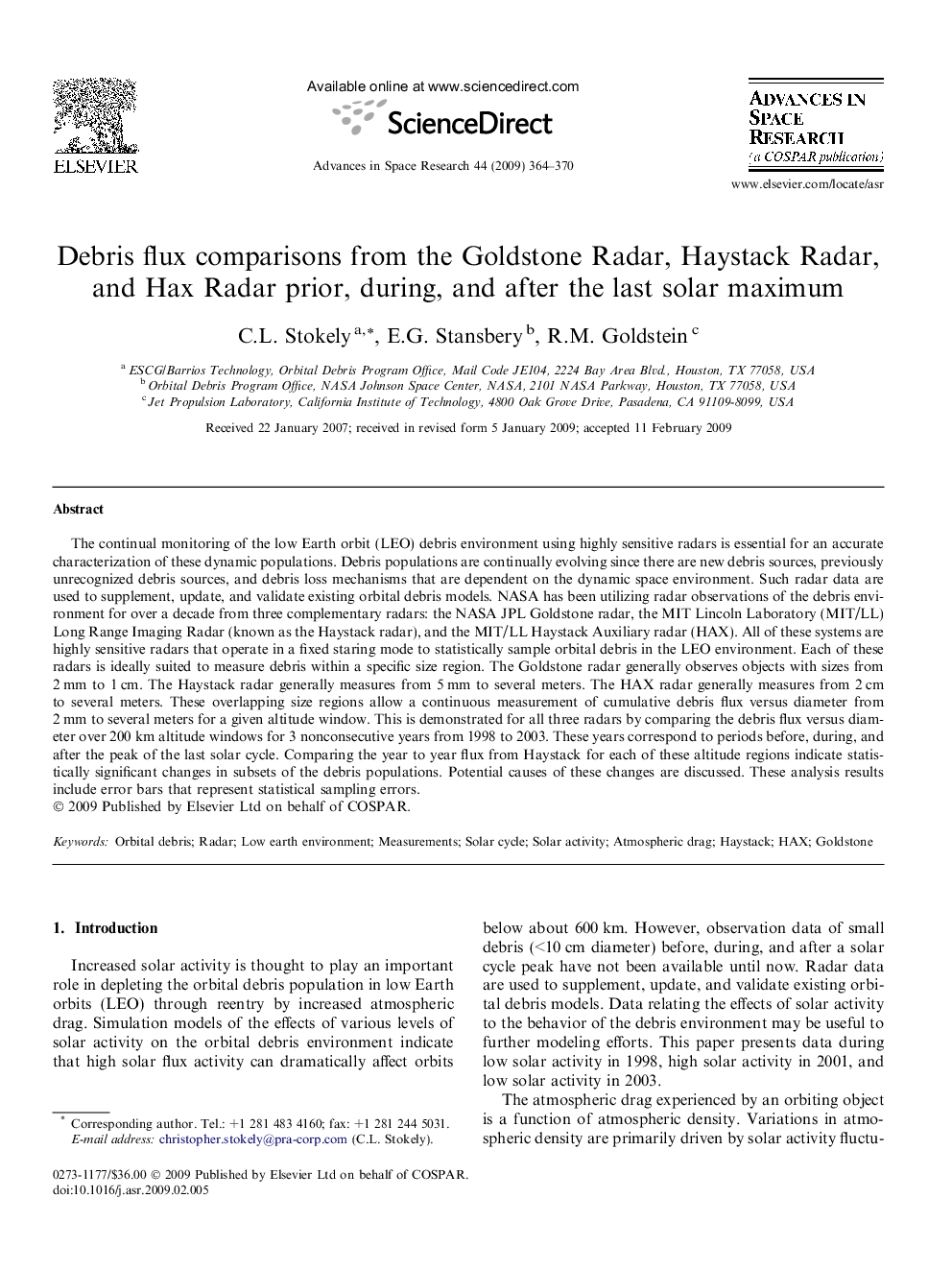| کد مقاله | کد نشریه | سال انتشار | مقاله انگلیسی | نسخه تمام متن |
|---|---|---|---|---|
| 1767012 | 1020173 | 2009 | 7 صفحه PDF | دانلود رایگان |

The continual monitoring of the low Earth orbit (LEO) debris environment using highly sensitive radars is essential for an accurate characterization of these dynamic populations. Debris populations are continually evolving since there are new debris sources, previously unrecognized debris sources, and debris loss mechanisms that are dependent on the dynamic space environment. Such radar data are used to supplement, update, and validate existing orbital debris models. NASA has been utilizing radar observations of the debris environment for over a decade from three complementary radars: the NASA JPL Goldstone radar, the MIT Lincoln Laboratory (MIT/LL) Long Range Imaging Radar (known as the Haystack radar), and the MIT/LL Haystack Auxiliary radar (HAX). All of these systems are highly sensitive radars that operate in a fixed staring mode to statistically sample orbital debris in the LEO environment. Each of these radars is ideally suited to measure debris within a specific size region. The Goldstone radar generally observes objects with sizes from 2 mm to 1 cm. The Haystack radar generally measures from 5 mm to several meters. The HAX radar generally measures from 2 cm to several meters. These overlapping size regions allow a continuous measurement of cumulative debris flux versus diameter from 2 mm to several meters for a given altitude window. This is demonstrated for all three radars by comparing the debris flux versus diameter over 200 km altitude windows for 3 nonconsecutive years from 1998 to 2003. These years correspond to periods before, during, and after the peak of the last solar cycle. Comparing the year to year flux from Haystack for each of these altitude regions indicate statistically significant changes in subsets of the debris populations. Potential causes of these changes are discussed. These analysis results include error bars that represent statistical sampling errors.
Journal: Advances in Space Research - Volume 44, Issue 3, 4 August 2009, Pages 364–370